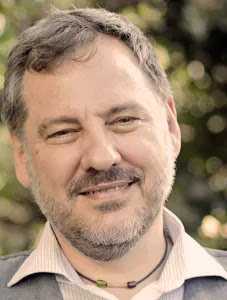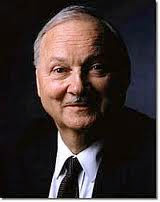Guest blog by Mafruza Khan:Transforming Our World: OneNYC, Sustainable Development Goals and the New Economy
By Mafruza Khan
OneNYC, launched earlier
this year, is New York City’s sustainability and equity plan that uses four
lenses – growth, equity, sustainability and resiliency – and sets 25 goals to
be met by 2030 that will be monitored and reported annually. OneNYC builds on
PlaNYC, originally released in 2007, by embedding equity and was developed in a
participatory process that included New Yorkers, civic and business leaders,
elected officials and city agencies to address New York City’s long-term
challenges: the forecast of 9 million residents by 2040, changing climate
conditions, an evolving economy, and aging infrastructure.
On January 1, 2016, the world,
i.e., the United States and all 190 member states of the United Nations will
start implementing 17 universal Sustainable Development
Goals (SDGs) with 169 targets, which, like OneNYC address the related
challenges of growth, inequality, sustainability and resiliency. Another
important factor tying OneNYC to the SDGs is that Goal 11 under the SDGs is to
make cities and human settlements more inclusive, resilient, safe and
sustainable. The SDGs were developed in a consultative process over almost four
years and build on the Millennium Development Goals (MDGs).
The SDGs are a fundamental shift
from the MDGs in two respects: first, it is applicable for all countries,
developed and developing, and, second, the SDGs encompass the three pillars of
economic and social inclusion and environmental sustainability and their
interlinkages, while the MDGs were more narrowly focused on economic
development for developing countries. With a projected global population of 9
billion plus by 2050, rising inequality within and between nations, climate
change and the opportunities and challenges posed by the next or Third
Industrial Revolution, it is no coincidence that OneNYC and the SDGs (or
the 2030 Agenda) have overlapping and common goals and objectives as well as a
focus on implementation, monitoring and evaluation. Both also emphasize
government-civil society-business partnerships and public participation as
individuals.
Given the common timeline of 2030
and goals of both plans, it would be instructive to understand how OneNYCtargets and associated indicators converge or diverge when overlaid with the
SDGs for NYC. It could surface discrepancies or inconsistencies, improve
coordination, streamline and potentially increase resource efficiency, and
promote transparency and accountability in processes and outcomes.
Equally importantly, what does
it mean for implementation and partnerships? Let's test the government -
philanthropy/civil society - business partnership model for achieving the
common goals for the SDGs and OneNYC. For philanthropy, why not start with all
the foundations that fund work in NYC? The good news is that SDG Funders is working to
engage philanthropy in global and country specific SDGs. The Council of Foundations
is working to increase awareness among funders that no matter what their
specific mission, it ultimately connects to the SDGs. The UN will agree on
a framework for recognizing partnerships to deliver the targets for the SDGs in
2016.
With respect to
government, the Mayor’s Office of Sustainability oversees the development
of OneNYC and shares responsibility with the Mayor’s Office of Recovery and
Resiliency for ensuring its implementation. But other offices, such as the
Mayor’s Office for International Affairs, which serves as the primary
liaison between the City of New York and the diplomatic community, foreign
governments, the United Nations, and the U.S. Department of State and is
working to build a global platform through which the City can promote its
equity agenda and share policies and best practices globally could potentially
play an effective role in the OneNYC-SDG agenda. Similarly, the Mayor’s Office
for Special Projects and Community Events, the Mayor’s Office of Media and
Entertainment (whose mission is to enhance government communications by
making information more accessible to the public and leveraging technology to
aid in transparency) and the Mayor’s Office of Strategic Partnerships could all
play important roles, notwithstanding the challenges of inter-agency
coordination.
The good news is, as evidenced by
the 400,000 people who joined the Climate March in NYC last year, and the work
since then, the climate movement, particularly the campaign to transition
to clean energy in New York is getting stronger and connecting to other social
movements (e.g. immigration, BlackLivesMatter/racial justice, low wage
workers/$15 minimum wage). The People’s
Climate Movement NY will be holding a forum on November 17th to
discuss the opportunities and challenges of getting to 100% clean energy in NYC
by 2030, which is Goal 7 under the SDGs. Globally, IRENA
serves as the intergovernmental body that supports countries in their
transition to a sustainable energy future and serves as the principal platform
for international cooperation. “IRENA promotes the widespread adoption and
sustainable use of all forms of renewable energy, including bioenergy,
geothermal, hydropower, ocean, solar and wind energy in the pursuit of
sustainable development, energy access, energy security and low-carbon economic
growth and prosperity.”
And, energy is a fundamental game
changer! Transitioning to energy democracy
vis-à-vis a low carbon/clean energy economy and infrastructure will also entail
investments in and financing of appropriate technologies, processes and scales,
as was the case for the Internet or the federal highway system in the U.S.
Equally importantly, the energy transition will go hand in hand with the rise
of the Internet
of Things that is shaping the future of jobs and the potential for a just
transition.
Image: Center for Social Inclusion
But as reported in the New
York Times, only 158 families contributed half of the seed money or $176
million to support presidential candidates for 2016 in the initial phase of the
campaign. “They are overwhelmingly white, older and male in a nation that is
being remade by the young, by women and by black and brown voters.” Most made
their fortunes in just two industries: finance (64 of the 158 families) and
energy. In finance, these donors started hedge funds or private equity and
venture capital funds and in energy they capitalized on exploiting shale
formations in North Dakota, Ohio, Pennsylvania and Texas through hydraulic
fracturing (which is banned in New York and in France, Germany, Scotland and Bulgaria).
They overwhelmingly support an agenda of pared regulations, lower taxes on
income, capital gains and inheritances and shrinking social safety nets.
History teaches us that that
change occurs over a period of time through a combination of strategies, forces
and events - small and large, planned and unplanned – that lead to tipping
points. The digital
transformation of society is expected to become mainstream by 2016 and most
people, including some
from the 1%, agree that current levels of inequality are threatening social
cohesion and overall productivity and that climate change is real. As we
transition to the Digital-Mobile-Social-Cloud
Era, a "fundamental technological transformation in the way economic
activity is organized and scaled portends a great shift in the flow of economic
power from the few to the multitudes -- the democratization of economic
life." Can we use this tipping point to create a fairer and safer world
by aligning local and global plans and goals and engaging in both partnerships
and resistance to business as usual?








Comments
Post a Comment